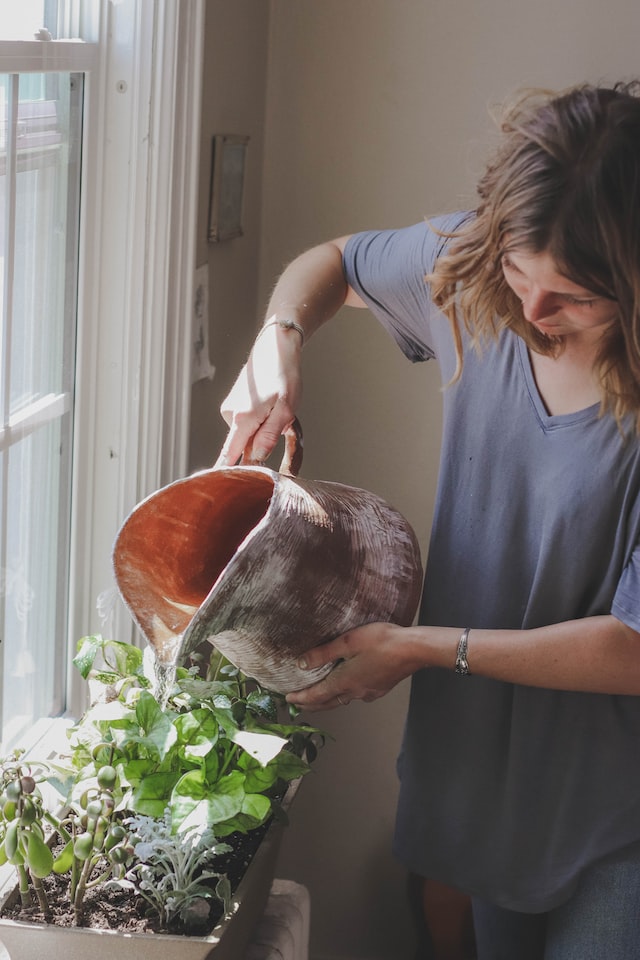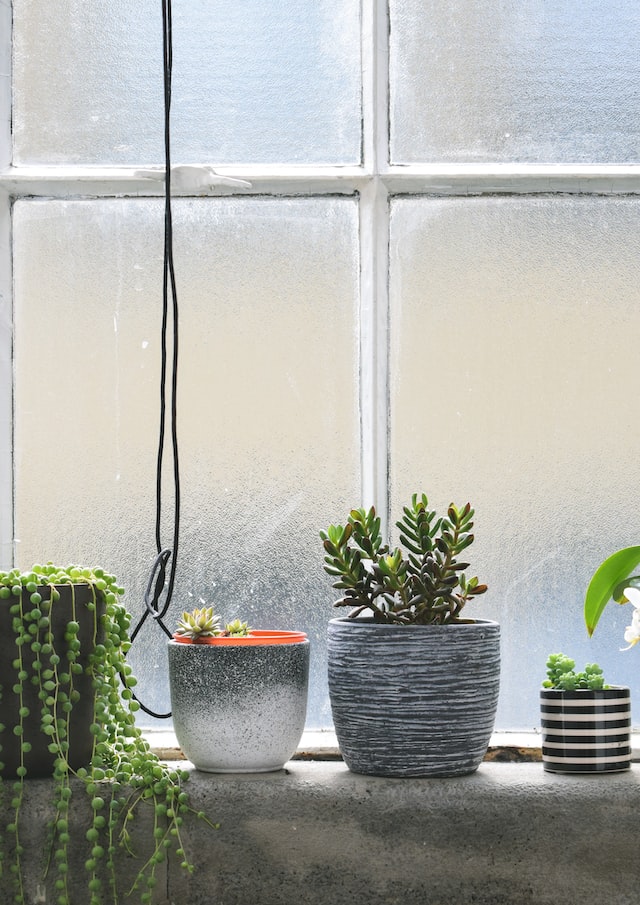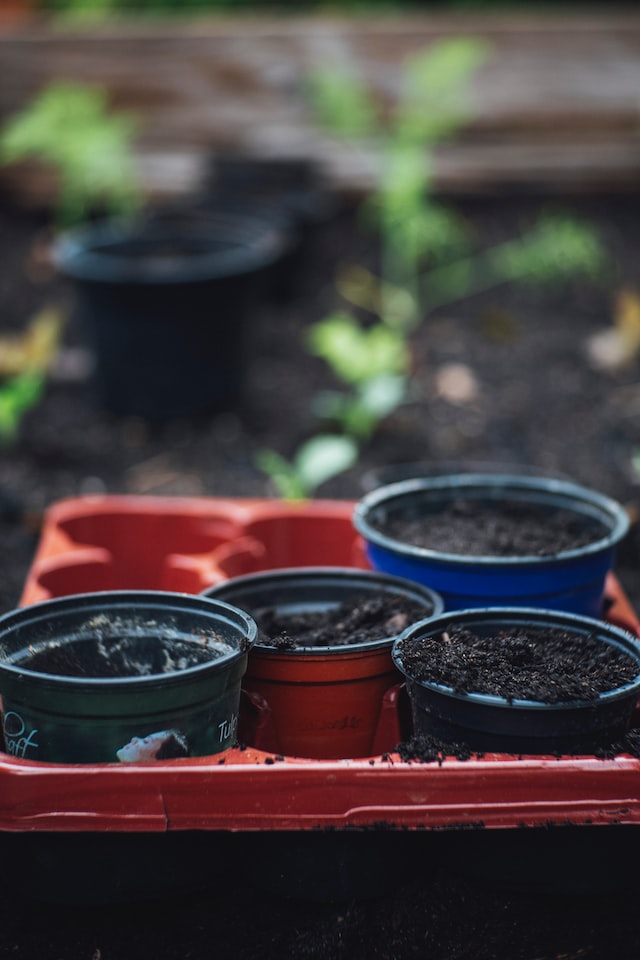Everyone does not have the luxury of opening a garden or a yard. Many people live in apartments and rentals that either do not have outdoor gardens or are not allowed one. Despite these restrictions, they can still grow their own herbs if they want to.
They can have a small one with two or three herbs to use for cooking or have a large one that fills a whole window with a large variety of herbs – it just depends on how a person chooses to handle it. Despite what people believe, you can easily grow your herbs indoors and have them thrive. The only catch is that you should know how to properly take care of them for them to thrive.
Benefits of Having a Herb Garden
There are many benefits to having an herb garden inside the home. It reduces your shopping list and fills your home with a wonderful aroma. Herbs are essential in most of our meals, and we usually add them in to boost the flavors.
Helps Save Money
Herbs have many health benefits. Therefore, it is essential on most grocery lists. However, if you grow your own herbs, you won’t have to make any last-minute dashes to the grocery store just because you don’t have that one minor ingredient. Additionally, most stores overprice herbs, and it can really put a dent in your budget. They are also likely to go wrong if you don’t use them all at once, which most people don’t do.
Growing your own herbs can save you a lot of time, effort, and money in the long run.
Sustainability
Growing herbs is also sustainable as herbs found in the store are frequently covered in plastic wrap or single-use packaging. Furthermore, disposing of herbs that have gone bad contributes to the food waste problem at hand. Therefore, by having a herb garden, you can really help the environment.
Easy to Maintain
One might assume that growing herbs is difficult and requires a lot of care. However, herbs are relatively low maintenance. If you place them in an ideal condition where they receive ample sunshine, they will grow just fine on their own.
Furthermore, herbs are small and can be placed on a windowsill, where they will grow well and serve to make your space look pretty and add a pop of color. Therefore, it serves to enhance the aesthetic of your home as well. They help freshen up the room with their scent and mask any unpleasant odor.
Fresh Taste
Growing your own herbs indoors also allows the herbs to taste fresh and make your dish even more delicious. Herbs sold in stores are often kept on shelves for extended periods, and no one knows when they were picked. However, when picking out herbs from your own indoor herb garden, you know that they will be fresh and taste good.
Supplies
When you are embarking on the mission to make your own herb garden, it is important that you have all the supplies needed to help your plants grow. In general, each of your herbs should be in different pots, and they will require healthy soil and plant food to ensure growth.
There are also many kits available online that you can use to start your own indoor garden, but those are usually recommended for complete beginners. You may have most of the items needed already in your home, such as containers, gardening tools, etc.
Planter
A planter or small pots are required to put the soil in for the plants to grow. How many plants will be growing may be a factor in this decision. A long planter can hold a variety of herbs in a more solid manner than a row of pots, but if the shelf space is available, individual pots can be cute and easier to work with.
There are a variety of containers available on the market. You can find normal-looking planters or funky ones that add fun and color to your indoor garden. However, be sure the planter is fulfilling its purpose before focusing on how it looks. If it fulfills the purpose, then you can grow your herbs in fun containers as well.
Choose the planter based on the size of your plants and the available space. If you intend to have many plants, choose smaller pots. Some planters can also be hung from the ceiling. These usually have a hook or rope that allows you to easily hang the planter. Such planters also help save space.
Drainage
Drainage is extremely important for plants to grow healthily. Therefore, make sure that a tray or protector can go under to catch water and protect the furniture or windowsill. A layer of gravel or pebbles can line the bottom to help with drainage, as needed.
A Sunny Location
Herbs grow well in sunlight. Therefore, to have a successful indoor herb garden, you should find a sunny spot to keep your herbs. It is best to place your herbs in a location that has six to eight hours of sunlight.
Usually, south-facing windows are the best. They can provide the herbs with ample sunlight for them to grow well. If your window does not have a window sill, you can always improvise and add a table or a shelf in front of the window so that there is enough space to arrange the herbs depending on how much sunlight they require.
If the kitchen has a window near a perpendicular wall, that wall can also be used for a planting place. Some other options are a pocket shoe rack, a set of shelves, or a vertical planting place which can be made using a frame with dividers and a screen to keep the soil from falling out.
If a sunny location is difficult to find in your house, a grow light can be extremely helpful. It also helps in the winter months when the sunlight is limited. It provides an artificial replacement for sunlight to ensure that your herbs do not lose their progress and start to wilt. Usually, grow lights use specialized LED lights designed not to heat up and stress out your plant.
Potting Soil
Having good potting soil is a must. The herbs need to be nourished, and good soil is the best way to do that. The type that has fertilizer already mixed in, especially for growing edible plants, maybe the best starter soil.
Most people go for heavy soil, but herbs require soil that provides good drainage. Good potting soils usually have mixed mulch and woodchips, which provide extra drainage. You can also choose to purchase potting soil that is plant specific as will help boost growth.
Some potting soils or potting mixes also have pesticides mixed into them. However, they are not ideal for all kinds of plants or herbs. Therefore, you need to take into consideration the herb that will be growing in the soil.
A Spray Bottle or Mister
If you live in a dry environment, adding humidity to the environment is extremely important. Young plants can really benefit from having water applied to their leaves. Hence, you should aim to mist or spray them almost every day. For such tasks, having a spray bottle or mister is extremely useful.
Moisture Sensor
Not everyone has a green thumb, but it’s not necessary when there are so many devices out there that can help you stay on schedule with time-sensitive tasks such as watering your plants. Moisture sensors often come with smart sensors that can be connected to your phone, and you will receive an alert if your plant’s moisture goes down wherever you are.
Through such devices, you can also set alerts so that you are reminded to water your plants so that they have the correct moisture level at all times.
Plants
The only other thing needed is the plants. These can be started from seeds, or young plants can be purchased from a nursery if starting from seed is too daunting. They can also be started from cuttings, in most cases, by cutting at the node, then leaving the bottom in water until it sprouts roots.
If certain herbs are often a part of dinner preparation, those are an excellent option. If herbs have not been a large part of meal prep in the past, but are desired, consider some of the more common ones.
Some of the best herbs to grow in the kitchen include basil, chives or garlic chives, mint, oregano, sweet parsley, rosemary, and thyme. However, you have to be careful when buying herbs. It is always good to check for sticky dropping and fine webs, which aphids and spider mites can create. Although they are not a huge issue, it is best to start with pest-free herbs.
Tips To Have a Successful Indoor Garden
Herbs are straightforward to grow, provided that you have started off correctly. One of the main things to keep in mind is the plant’s requirements and that they are getting what they need. That is just about it. Here are some tips to make your indoor herb garden flourish.
Have Strong Light
Herbs grow best in intensely bright light as the intensity significantly affects their taste. The brighter the light, the better the flavor will be, and it will also encourage their growth. Usually, herbs should receive six to eight hours of direct sunlight for optimal growth. You can either set them up in front of a south-facing window or in front of a grow light.
Have an Ideal Temperature Between 60 to 70 Degrees
Another essential factor in ensuring the successful growth of your herb plants indoors is the temperature. The ideal temperature for most indoor herbs lies between 65 to 70 degrees. This temperature also works for most home environments. Therefore, if you have a thermostat, you should aim to keep it within these ranges.
Furthermore, if your herb garden is overproducing, you can take matters into your own hands and reduce the temperature to 60-65 degrees, which will help slow down the growth of the plant.
Grow Each Herb in Its Own Separate Pot
In your indoor herb garden, avoid combining multiple herbs in one container. Usually, it is not an issue when herbs are growing outside or have ideal conditions, but when you are growing your herbs indoors, where there are fewer options to control the environment, it is best to separate the herbs.
Doing so also gives you the most flexibility as you can rotate the pot, take care of pests and ensure that each herb is receiving care according to its needs without affecting the others.
Picking the Right Herbs
There are many different herbs out there, and most of these herbs can be grown fuss-free indoors. However, for your herbs to thrive, it is essential that you choose herbs that are easy to grow and do not need a lot of care and attention. These herbs include basil, mint chives, oregano, parsley, rosemary, and thyme.
Harvest Little By Little
When your herbs start to grow, it may be tempting to be heavy-handed with herbs on your dish and to cut off all the leaves, but it is better for the plant and its longevity if you harvest a few springs at a time. You can use kitchen scissors or pinch off a few leaves with your fingers each time you want some herbs.
Avoid removing more than a quarter of your plant at one time, as it may cause distress to the plant and even kill it.
Challenges in Growing Herbs Indoors
Even though growing herbs may seem easy, there are some challenges that one has to be aware of and prepare for.
Scarcity of Light
Most herbs need six hours or more of sunlight for best results. This means a window that gets a lot of sunlight is a requirement. This can be a challenge in some homes due to limited or small kitchen windows.
If the kitchen has only one window and the quantity of herbs desired is large, it is possible to set shelves next to the window to accommodate more pots or planters.
Overwatering
Herbs need water, which should be easy in a kitchen. However, herbs can be overwatered easily, so it is necessary to be careful to keep the soil just moist and not soaked. Yellow or wilted leaves are an indication of excess water.
Incorrect Pot Size
Some herbs may grow too large for the pot they are planted in. If this happens, they can be transplanted into a larger pot. Perennials are likely to need to be replanted at some point unless a lot of the herb is used regularly. Indications that the plant has outgrown its home include visible roots escaping the drainage holes, stalled growth, and floppiness.
How To Harvest
The goal of a kitchen garden is usually to have herbs to use. Fresh leaves can be trimmed from the top or outermost branches, and doing so will encourage the plant to keep producing more, as long as it is kept reasonable. Cutting more than a fourth of the plant can kill the plant, so it is better to use a few leaves at a time.
If desired, a whole plant (especially annuals) can be uprooted, washed, and then dried and stored for future use when it is well grown. If this is the plan, having several of the same herbs may be desirable.
Conclusion
Growing herbs in an indoor garden is the perfect solution when you don’t have an outdoor garden. Furthermore, suppose you are hesitant to commit to a full garden with various different pots and plants. In that case, you can start with an indoor garden and see whether or not you are capable of maintaining it before you move on to more challenging tasks such as maintaining an outdoor garden.
It is a fun and easy way to help spice up your dishes and add some color to them without having to spend your hard-earned cash on containers of overpriced herb containers which have been on the shelf for longer than they should have been.



